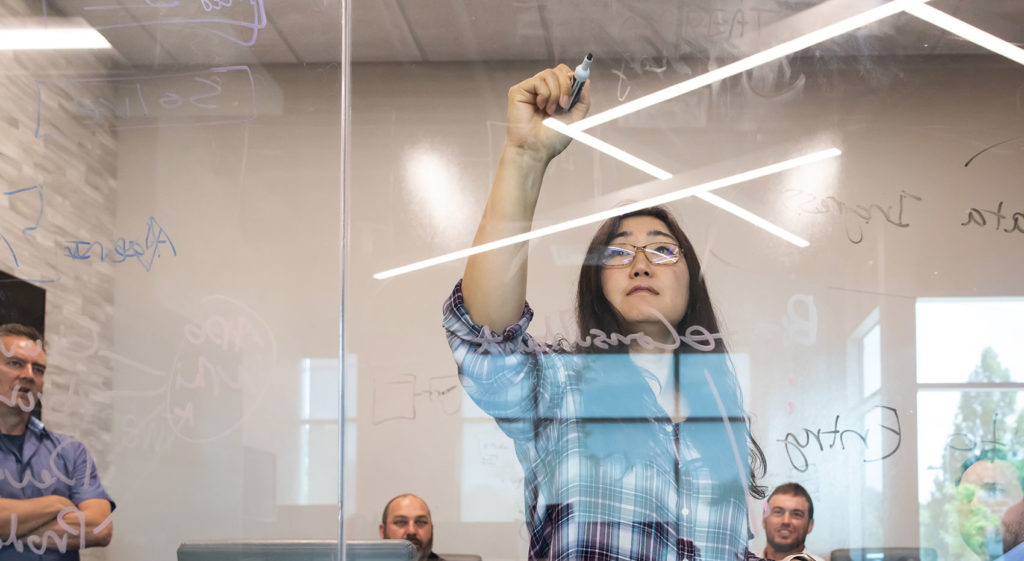Frenzy. That’s the best way we can describe the perception of artificial intelligence today. Ever since the launch of OpenAI’s ChatGPT 3.5 in November 2022, the world has been moving at breathtaking speed. Within our team, many became quick adopters of ChatGPT, testing its capabilities and learning how to use it effectively. It’s been a paradigm shift away from the long-standing “best practice” of: having a question, pulling up Google, clicking the top non-sponsored result, skimming its content, and then either finding the answer or returning to the search results to try another result. ChatGPT’s conversational UI and token-based “memory” are much different than the old ways – in a very powerful way.
As ChatGPT became the fastest-growing consumer internet application in history, competitors scrambled to catch up. Anthropic’s Claude, Google’s Gemini, Mistral’s 7B, Facebook’s Llama, and others have launched publicly since. A secondary market has also emerged, with countless tools (probably the most well-known is Microsoft’s Copilot) built on top of these foundational models’ infrastructure. This arms race has been incredible for the consumers of these tools, initially, software developers and their teams, and now everyone else is starting to catch on. 27Global is grateful to be in the right place at the right time to take advantage of these massive leaps forward, and our team is beyond excited to have the support to use the best of what’s on the market today, and what will be on the market tomorrow.
The speed at which the landscape is changing is overwhelming. Every day there is a new development or product release. ChatGPT 4 and the Advanced Data Analysis plugin have dramatically improved the quality and depth of responses. Nvidia, the stock market darling whose GPUs and CUDA programming language have been running most of the top AI models today, is moving into cloud computing with new AI-specific chips, new software, and a much wider footprint. Ever-increasing context windows are allowing businesses to extract value from larger datasets with incredible speed. Models can be run faster with specialized chips, like Groq’s LPUs. Image generation with Midjourney and DALL-E and the new (at the time of this writing) release of video generation with OpenAI’s SORA are stopping entire industries, like filmmaking, in their tracks. How does a business take advantage of these rapid developments when they are happening so quickly?
27Global’s opinion is that the opportunities for businesses today are to get up to speed on using the best tools as fast as they can and keep doing that as new tools come out. Avoid long-term vendor lock-in, try to use the best tool for the job, and continually assess the best methods of integrating said tools into our processes. 27Global has always been technology agnostic for this reason, and this mindset will serve businesses well today and into the future.
27Global’s opinion is that the opportunities for businesses today are to get up to speed on using the best tools as fast as they can and keep doing that as new tools come out.
We surveyed our team to gather real-world examples of how we’re using AI tools today, which ones are the best in their class, common pitfalls that can hinder adoption, and where we see the world going in this new age of AI.
Real-World Examples
Consulting
- Mladen Gajic has been utilizing AI extensively for getting context on new domains, troubleshooting problems, and assisting him to write complex SQL queries and Python scripts for data analysis. “ChatGPT basically allows me to write code in English.”
- Kelley Madsen uses AI to generate test cases, documentation templates, and create notebooks for data products. “Databricks also has a built-in AI that is pretty solid.”
- Nicole Williams translates ticket descriptions into acceptance criteria. “ChatGPT significantly reduces the time I spend writing tickets and acceptance criteria, but I rarely copy and paste a response directly without manual editing.”
- Nate Christenson uses AI to offload things like logical processing and library analysis to save time getting to conclusions and developing complex formulas. “I also use it as an intermediary step when exploring a new solution for an upcoming feature, for example, laying out the high-level tasks to implement a reporting tool on AWS.”
- Patrick Mader can reduce the time spent writing complex queries significantly. “What used to take multiple attempts to correct on my own has been sped up, as well as providing alternative ways to get to the end goal.”
- Anthony Nguyen created a custom GPT to quiz him on new certifications. “I’ve also used offline LLMs like Chat with RTX to quickly search through my notes, without having to search for an exact string.”
- Justin Ford can design high-level architectures to bring to the engineering team for evaluation. “We were trying to figure out how to handle a maximum load on a particular system, and I was able to come up with a high-level solution using ChatGPT for the architecture and cloud teams to review and implement.”
- Patrick Kinne created a custom GPT to support the reporting needs of a new internal system. “The system uses a one-off language called MAQL to develop metrics. I was able to PDF both the system knowledgebase and the MAQL knowledgebase, create a private custom GPT with those files, and so far it has yet to write a bad query as long as my requirements are solid.”

“ChatGPT significantly reduces the time I spend writing tickets and acceptance criteria, but I rarely copy and paste a response directly without manual editing.”
-Nicole Williams, Senior Consultant
Cloud
- Trung Tran has been leveraging AI to help develop new Terraform modules and CI/CD pipelines much faster. “The initial scaffold allows me to refine and align the outputs with our organizational standards, and enhances our development efficiency by a minimum of 50%.”
- Ethan Fank offers that “The first output is generally not very good, and you have to continue to refine your initial question to get a better output. I’ve been able to quickly create AWS CLI commands that can be changed to fit my needs with this approach.”
- Anthony Miller used ChatGPT to lay out an API gateway in detail. “It helped me figure out how it’s used and different methods of configuring the API definitions. I would’ve spent a substantial amount of time trying to dig into documentation to figure out the same information.”
- Dimitri Schrader has been using ChatGPT and Stable Diffusion extensively. “AI at this point is not a replacement for knowledge. The output usually has some issues that need to be massaged whether through additional prompting or fixing the output manually. The person using AI always needs to be able to vet the output of the given tool.”
“The initial scaffold allows me to refine and align the outputs with our organizational standards, and enhances our development efficiency by a minimum of 50%.”
-Trung Tran, Solutions Architect

Data and Architecture
- Sun Jang uses AI to expedite searching documentation, look up syntax and formatting and defining examples. “AI is quick to find examples of new technology, but evaluating the accuracy of a solution requires some level of knowledge to validate it.”
- Sang Vo uses AI to design unit tests, generate mock data for testing, and compare packages and libraries to use for specific problems. “For example, to create PDF files, there are many packages, but not every package is the correct one for a specific project’s needs.”
- Doug Whittenburg has been using Copilot extensively for search, data queries, and modeling. “Copilot in Microsoft Fabric saves legitimate time writing data pipelines.”

“AI is quick to find examples of new technology, but evaluating the accuracy of a solution requires some level of knowledge to validate it.”
-Sun Jang, Principal Architect
Common Pitfalls
Data Privacy is a major concern for many organizations. Ensuring internal business data is protected, especially in cloud-based environments, is of high importance. Aligning your organization with a vendor with strict data training and protection controls is important to protect your business against threats.
AI can generate a lot of content, though it’s never perfect. Inaccuracies or misinterpretations are common, and human editing and validation are required for any output. It is important to reinforce this concept when training users of any AI tool. Do not copy/paste the output, rather, use it as a starting point for your own work.
Many AI systems struggle with contextual understanding and have to be “reminded” of the context of the task as their context windows become tapped. These windows are becoming larger, effectively increasing the memory of the model, and there is a lot of room to grow. It will be interesting to see how this changes over time.
Efficiency Gains
Albeit a small sample size, our team forecasts that we can be up to 62% more efficient with the usage of top-of-the-line AI tools. AI is not going to replace our work, it’s going to enable us to build faster, better, and more innovative technologies and products for our clients at a faster speed.
We believe OpenAI’s ChatGPT and Microsoft’s Github Copilot are the best tools on the market today. Our clients will have the ability to opt in or out of the usage of these tools. We’re signing up for ChatGPT Team, which provides segregated data protections and robust security controls. Github Copilot will be used at our clients’ request due to privacy concerns scanning all the repositories within an organization.
We’ll continue to closely monitor the AI landscape and stay abreast of new releases. Our team has the skills and willpower to pick up new tools quickly and put them to work efficiently. Whatever the frenzied future holds, we’ll be ready to seize the opportunities.

As 27Global’s VP for Client Service, Patrick Kinne ensures we deliver for our clients, continuously refining and advancing our processes, and streamlining and extending our solutions to fit the market. Pat is based out of Denver, works with clients coast to coast, and leads a globally distributed delivery team. He is grateful to work with some of the best in the business to solve challenging and interesting problems every day.





